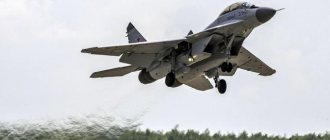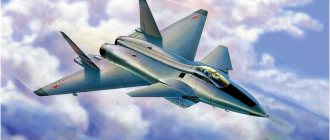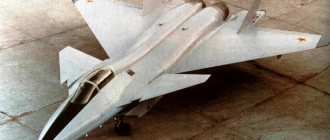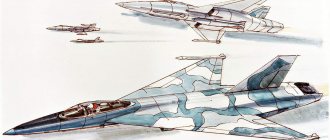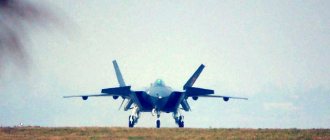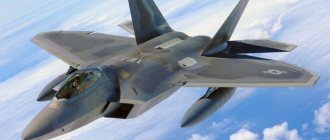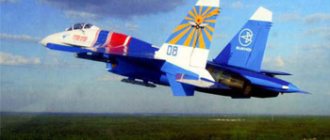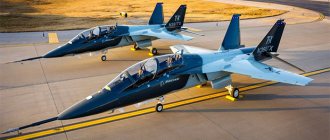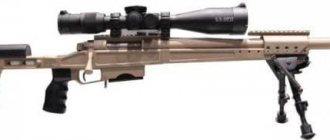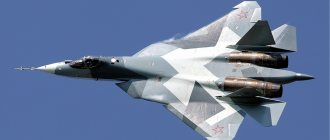The “fifth fighter”, or I-5, is presented in the form of a Soviet-made sesquiplane fighter. Lightweight and maneuverable, it is made of mixed materials: wood, metal, canvas. The plane was originally named VT-11 (“internal prison”). It is a joint development of D. Grigorovich and N. Polikarpov (1929) at the Central Clinical Hospital 39 named after V. Menzhinsky “VT-11” in the Butyrka prison in Moscow. The task to create the I-5 aircraft was issued by the Red Army Air Force, and control was carried out by the Board of the OGPU.
The fighter was designed between 1929 and 1930. From a design point of view, the aircraft resembled the I-6 and was produced in three versions. Equipped with a power plant, the Bristol Jupiter VII made its first flight on April 29, 1930. B. Bucholz was at the helm.
The second prototype, sometimes referred to as "Klim Voroshilov", took off on a low-altitude Jupiter VI engine. The third prototype was equipped with a Soviet-made high-altitude engine M-15 or 2-M15. It was a continuation of the base of the American Pratt&Whitney R-1690 motor. This air machine differed from the first two in its new engine hood, which completely covered all cylinders. First flight – early July 1930.
Between August and September of the same year, the first seven operational combat I-5s were constructed.
History of the creation of the I-5 fighter
In 1928, many leading aviation specialists of the USSR were arrested on false charges. This fate did not spare Nikolai Nikolaevich Polikarpov and Dmitry Pavlovich Grigorovich. However, since there were no other aircraft designers of this level anyway, a rather absurd situation arose - the already convicted designers were entrusted with the creation of a new combat aircraft!
I-5 fighter , co-authored by Polikarpov and Grigorovich, was created In 1930, the design of the fighter was completed, and one after another, three experimental versions of the I-5, identical in design, but differing in engines, were submitted for testing. Subsequently, the main working project was the I-5 with the M-22 engine.
Drawing of the I-5 fighter designed by Grigorovich and Polikarpov
The tests went smoothly and quickly, the I-5 fighter showed excellent flight qualities, and in absentia, before all tests were completed at the Air Force Research Institute, it was put into service and put into production.
Strictly speaking, the atmosphere of the “prison design bureau” itself did not fit with the image of the “most modern” fighter, which, according to the plan, was also supposed to be superior to foreign analogues. And if we add to this the total shortage of literally everything (what can we say about duralumin, which was completely absent) and the state of the USSR economy at the end of the 1920s, then it seemed that Grigorovich and Polikarpov had nothing to count on. However, the plane turned out to be excellent; if we again remember the conditions of creation, then in general it was ideal.
Naturally, this “ideality” was relative, and it was not for nothing that the I-5 never made it into any “modern” war - by 1937 the fighter was outdated and was used more as a training machine. However, it still fulfilled another important role: it was the I-5 that became the first mass-produced Soviet serial fighter, the very foundation on which the Air Force was subsequently built.
During the period from 1934 to 1939, 803 I-5 fighters were built.
Story
The idea of developing a new car based on the DH9A arose on the initiative of the design department of GAZ No. 1, whose head was N. N. Polikarpov. In February 1923, D.P. Grigorovich was appointed technical director of GAZ No.1 and, accordingly, head of the production department, who remained in this capacity until August 1924. Then came the return of Polikarpov. Thus, both designers were involved in the creation of the aircraft, which later received the designation P-1. The need for improvement of the DH9A is given in the following explanation by Polikarpov for the project: “The aircraft was created in a haste during wartime, has numerous design flaws, was built from English materials and is not suitable for construction in the Russians. First of all, spruce was understood as an American seaside spruce, distinguished by the best strength indicators and the absence of knots. Despite all the advantages of this wood, it seemed impractical to import it to Russia. Therefore, the design of the R-1 was recalculated for Siberian pine. This process, changes in drawings and technology continued for several years, which, however, did little to change the appearance of the aircraft. In the process of reviewing and recalculating the aircraft design, the fuselage, wing box, lower wing attachment points, cockpit floor, engine mount were redesigned, and the wing profile was changed. The production technology was changed to suit the capabilities of GAZ No. 1. In general, the new aircraft, while maintaining the general outline of the DH-9A, had 30% fewer parts and 30-35% less labor intensity in manufacturing. The weight of the aircraft became 20 kg less than the weight of the original DH-9A, and the payload increased by 90 kg.
The aircraft industry of the USSR grew from the P-1 aircraft. Until 1930, the P-1 was the most popular aircraft produced in the USSR, despite its mediocre data. Built in Taganrog at Aviation Plant No. 31 until 1931. More than 1000 aircraft were built.
In August-September 1925, a pair of P-1 aircraft, piloted by M. M. Gromov and M. A. Volkovoinov, flew Moscow-Beijing-Tokyo. The first serial Soviet M-5 engines from the Obukhov plant in Leningrad, copied from the American Liberty L-12 aircraft engines, served out their service life without a hitch. For political reasons, only the Moscow-Beijing flight was covered in the press at that time.
It was used for more than 10 years for reconnaissance and artillery fire control, as a light bomber and attack aircraft, for training civilian and military pilots, maritime patrol, communications, target towing, mail delivery, and also for experimental purposes.
From the mid-1920s it began to be supplied to Persia, Afghanistan and Mongolia.
Characteristics of I-5
A country:USSRType:FighterYear of issue:1930Crew:1 personEngine:1x M-22, 480 hpMaximum speed:278 km/hPractical ceiling:7300 mRange of flight:No informationEmpty weight:No informationMaximum take-off weight:1355 kg (take-off weight)Wingspan:10.24 mLength:6.78 mHeight:No informationWing area:21.25 v.m.Weapons:2x 7.62 mm machine guns
Core i5-10400F
The Core i5-10400F has become the cheapest six-core processor in retail, paradoxically, but this is a fact. Competitors from AMD have inexplicably risen in price and now the entire lower segment of available six-core processors is occupied by products from Intel. Despite the low price, the performance of the Core i5-10400F is excellent and in games it is almost as good as the more expensive Ryzen 5 3600.
The model is also distinguished by its rather modest power consumption, which will allow you to assemble an inexpensive but productive entry-level system with a budget motherboard, without overpaying for the cooling system. Without a doubt, the Core i5-11400F has earned the title of the best budget six-core processor in our selection.
Design of the I-5 fighter
The I-5 fighter is structurally a single-seat sesquiplane of mixed design. The fuselage and engine frame are truss welded from steel pipes. The airframe is made of aluminum frames and stringers. The fighter, like most aircraft of that time, had a landing gear that was not retractable in flight and a tail support - a C-shaped crutch. The chassis, in winter, was replaced with skis.
The front part of the fuselage to the middle of the cabin was covered with removable duralumin hoods, secured with spring latches and steel pins. The rest of the fuselage was covered with fabric, not tightly fixed, but laced to the frame. If necessary, the aircraft could be “changed” without any problems.
The last fuselage compartment under the tail had removable duralumin fairings for inspection of the crutch shock absorber. The pilot's seat with a parachute cup was made of corrugated duralumin. On the cars of the first series there was no garrot, and the hoods were made separately for each of the cylinders. Later, the cylinder heads began to be covered with a Townend ring hood, and a frontal hood with louvers was installed in front.
The propeller was made of wood, the ends of the blades were bound with brass, and later the propeller was replaced with a duralumin one.
I-5 fighter of late production - the engine is closed with a Townend ring hood, aerodynamic floats on the chassis
Victory Aircraft
Victory in the Great Patriotic War for our country was also achieved by wonderful aircraft flown by brave pilots who did not spare their lives in air battles with Luftwaffe aces. Soviet designers and engineers were able to provide the Red Army Air Force with a fleet of aircraft that met stringent wartime requirements. And workers in the rear managed to launch large-scale production of various combat vehicles, which returned air superiority to the Red Army. In this article we will look at the three most popular Soviet combat aircraft of the Great Patriotic War: the Yak-9 fighter, the Il-2 attack aircraft and the Pe-2 dive bomber. Yak-9 fighter
The Yak-9 fighter was actively used in all operations of the Great Patriotic War from 1942 to 1945 and could compete on an equal footing with its main enemy, the German Bf fighter. 109. The Yak-9 became the most popular fighter in the Soviet Air Force during the war. In mid-1944, there were more Yak-9, Yak-9T and Yak-9D aircraft in active units than all other fighters in service combined. To a large extent, they all replaced the Yak-1 and Yak-7B on the main fronts. During the war, the production of Yak-9 fighters at plant No. 153 reached 20 aircraft per day.
The Yak-9 fighter became a natural continuation of the good Yak-1 and Yak-7 aircraft. From a design point of view, the new vehicle was a development of the Yak-7, differing little from the latter in appearance. At the same time, the Yak-9 was a more advanced aircraft in all respects. This was natural, since when developing this model, the designers learned from the entire two-year experience in the production and combat use of the Yak-1 fighter, and also got the opportunity to widely use duralumin, with which the Soviet Union at that time no longer experienced the difficulties that it had at the very beginning war. The machine was stable in all flight modes and had an excellent range of aerobatic qualities and maneuverability. The Yak-9 was superior to the Yak-1 and Yak-7B aircraft in flight speed, climb rate and vertical maneuver.
Created at the end of 1942 by the A. S. Yakovlev Design Bureau, the fighter was designed with a thorough revision of the entire design of its predecessor fighters. In order to lighten the structure of the aircraft, the wooden wing spars were replaced with metal ones. This event alone allowed the designers to reduce the weight of the fighter by approximately 150 kg. Initially, the aircraft's armament consisted of one cannon and a large-caliber 12.7-mm synchronized machine gun; the composition of the armament changed on various modifications of the aircraft. In some versions, the vehicle could be used as a fighter-bomber. When modernizing the aircraft, the visibility from the pilot's cabin was improved and the fuel capacity was increased. Serial production of the Yak-9 aircraft began at the end of 1942.
Overall, the Yak-9 fighter had significantly better combat capability and could successfully fight with the best German fighters. At the same time, on the basis of the Yak-9, the widest specialization of combat vehicles for various tasks was carried out. Thus, in 1943, the Yak-9T was developed and produced in a large series, the highlight of which was a 37-mm aircraft cannon, and in 1944, a completely unique fighter appeared - the Yak-9K, the main armament of which was a 45-mm cannon. These fighters were mainly used to combat enemy bombers and to attack ground targets. Also in 1943, the Yak-9D fighter, which had an increased fuel supply, began to appear on the fronts, and in 1944, an ultra-long-range version of the fighter was developed - the Yak-9DD, which was produced in a small series. If the maximum flight range of a conventional Yak-9 was 910 km, then for the Yak-9D it was 1400 km, and for the Yak-9DD it was 1800 km. The Yak-9B fighter-bomber was also produced in a small series, the fuselage of which could accommodate a bomb load weighing 400 kg.
After the development and completion of the new, more powerful V. Ya. Klimov VK-107A engine, a rare opportunity arose to significantly improve the performance of the Yak-9 fighter. At the very end of 1943, a modification of the Yak-9U was created. This fighter had not only the best power plant, but also significantly improved aerodynamic qualities. During testing, the vehicle demonstrated excellent flight performance and was put into production. The maximum speed of the vehicle at an altitude of 5 thousand meters was 672 km/h, and the armament included a 1x20-mm ShVAK cannon and 2x12.7-mm UBS machine gun.
Compared to all other serial fighters of the Red Army, the Yak-9U had the highest flight speed and excellent rate of climb. These figures for the beginning of 1944 were record ones. The plane reached an altitude of 5 thousand meters in 5 minutes. The aircraft stood out for its excellent maneuverability in both the vertical and horizontal planes. After the launch of mass production, the vehicles immediately went to the front. Unfortunately, initially, due to the lack of development of the VK-107A engine, fighter pilots could not use the combat mode of the engine, which produced increased power. But at the end of 1944, new and improved radiators began to be installed on the aircraft and the cooling system was modified, after which the temperature conditions of the engine returned to normal.
During the Second World War, the Yak-9U aircraft remained one of the most powerful fighters of the USSR and had real superiority over enemy aircraft. For its outstanding characteristics, the Yak-9U was nicknamed “killer” or “killer” by Soviet pilots. Production of the car continued for several years even after the end of the war. At the same time, the Yak-9U became one of the last Soviet piston fighters. In total, from October 1942 to December 1948, 16,769 Yak-9 aircraft of various modifications were produced.
Sturmovik Il-2
Perhaps it was the Il-2 that became the most recognizable aircraft of the Great Patriotic War. Almost everyone knows about this machine; the plane even gave its name to a whole series of Russian flight simulators, which for many years became the best games in their genre. But in 1941, the Soviet Union had no time for games and the Il-2 attack aircraft, and the pilots of this wonderful machine did everything in their power to achieve victory in the war. If in tank units the legendary T-34 tank became a symbol of war, then in aviation it was the Il-2. Both of these combat vehicles were built in gigantic series. The Il-2 attack aircraft became the most produced combat aircraft in history; a total of 36,183 aircraft of this type were produced in the USSR from 1941 to 1945.
The designer of this attack aircraft was Sergei Ilyushin, who began work on the aircraft back in 1938. In the Red Army, this aircraft received the nickname “humpback” for its characteristic fuselage appearance. The designers often called their vehicle a “flying tank,” and German pilots, due to the vehicle’s lack of maneuverability and high survivability, called the attack aircraft a “cement bomber” (Zementbomber) or “concrete airplane” (Betonflugzeug).
The main feature of the aircraft was the inclusion of armor in the power structure of the airframe. In this case, the hull armor replaced the skin and frame of the entire bow and middle parts of the Il-2 fuselage. The supporting armored hull of the vehicle was riveted and made of homogeneous steel armor AB-1 (AB-2), which covered the engine, radiators, cockpit and some other units. It is curious that on the prototype it also covered the gunner; this decision was returned to only at the end of the war on the Il-10 aircraft. The transparent front armor glass of the cockpit canopy was 64 mm thick and could withstand a point-blank shot of a 7.62 mm armor-piercing bullet.
The landing gear on the Il-2 aircraft was folded back, after which it was retracted into the wing body, and then covered with fairings to ensure better aerodynamic qualities. The designers also took care of installing weapons, which were located in the inner part of the wing, and under the wing it was possible to install guides for RS-82 and RS-132 missiles. Due to its rather large weight, the aircraft with the AM-38 engine (1665 hp) developed a maximum flight speed of 426 km/h; the landing speed of the attack aircraft was 140 km/h.
The attack aircraft demonstrated its reliability and positive qualities already in the first months of the war, but the aircraft also had disadvantages. At that time, the most significant drawback was the lack of a machine gunner who would be able to repel attacks by enemy fighters from the tail. This drawback led to large losses of aircraft that flew on missions without fighter cover. At the same time, the title of Hero of the Soviet Union was awarded to attack pilots for completing 10 successful combat missions, and not after 100, as usual. In the first months of 1942, the Ilyushin Design Bureau held a conference to which not only testers of the vehicle were invited, but also combat pilots themselves. It was necessary to identify the aircraft's shortcomings and eliminate them. It was at the conference that the final decision was made to return the onboard gunner; the designers also paid attention to increasing the caliber of the cannon armament and increasing engine power.
During the war years, the Il-2 aircraft was continuously improved. So at the beginning of 1943, it was decided to arm the attack aircraft with more powerful guns to combat enemy tanks. The Il-2 was equipped with two NS-37 cannons with 50 rounds of ammunition each. However, this gun turned out to be too powerful and fast-firing. When firing, the plane swayed and turned in the air, which seriously hampered the conduct of aimed fire. Therefore, they decided to abandon the NS-37 gun. Small-caliber anti-tank bombs PTAB-2.5-1.5 proved to be much more effective. One attack aircraft could carry up to 200 such bombs; when dropped, they covered a strip 10x100 meters wide. But it was important to use the new weapon correctly. These bombs were especially effective against enemy columns on the march or against places where enemy armored vehicles accumulated, when used en masse from several Il-2 attack aircraft. They were first used during the Battle of Kursk.
In 1943, Soviet designers finally managed to do something about the general awkwardness and heavy handling of the Il-2. At the beginning of the year, they began installing a new AM-38F engine with a power of 1,760 hp on the aircraft, and at the end of the year it received a new wing with increased sweep (“wing with an arrow”). The vehicle's characteristics improved, and the bomb load increased to 600 kg. By the end of 1944, when new metallurgical plants began operating in the country, the Il-2 attack aircraft became entirely metal, getting rid of its wooden tail section. It was in this form that the famous attack aircraft celebrated Victory Day.
During all the years of the Great Patriotic War, the Red Army lost more than 23 thousand Il-2 attack aircraft and more than 7.8 thousand pilots of these machines. It should be borne in mind the fact that 12 thousand aircraft were lost by the Air Force not in combat conditions. If we talk about statistics, then every 53rd flight of the Il-2 attack aircraft was its last. Attack aircraft died more often than other aircraft, as they worked along the front line of enemy troops, saturated with air defense systems, attacking positions from a very low altitude.
Pe-2 dive bomber
During the Great Patriotic War, the Pe-2 aircraft became the most popular Soviet bomber. These vehicles took part in battles on all fronts. They were used in land and naval aviation, operating as bombers, reconnaissance aircraft, and fighters. Work on the creation of this aircraft began in mid-1938 by a group of designers at TsKB-29, led by V. M. Petlyakov. It is worth noting that this Central Design Bureau was part of the Special Technical Department of the NKVD and was a unique organization, the backbone of which was made up of repressed Soviet citizens - “pests” and “enemies of the people.”
The Pe-2 received its name after the tragic death of V. M. Petlyakov in a plane crash. The aircraft, due to the very tight deadlines that were allotted for its creation and complex of tests, had serious shortcomings by the beginning of the war. Due to the insufficiently high load-bearing properties of the wing, the aircraft was difficult to fly and land, especially for inexperienced pilots. When slipping occurred, a very strong roll reaction of the car was observed. When one of the two engines stopped, the plane sharply went into a roll, sometimes ending up on its back before the pilot had time to take any action. The designers had to work to correct the aircraft's shortcomings already during the war years. Despite its shortcomings, the Pe-2 proved to be a very effective aircraft, being the only mass-produced front-line dive bomber in the USSR during World War II and the most popular Soviet bomber, with 11,427 aircraft being assembled from 1941 to 1945.
It is interesting to note that the aircraft had approximately 50 electric motors of five types with power from 30 to 1700 W. They were used to service aircraft components: they changed the pitch of the propellers, closed and opened the radiator flaps, actuated valves, pumps, flaps, and also, at the command of the AP-1 automatic dive machine, released or removed aerodynamic brakes - grids of steel pipes that were suspended under wing consoles. Thanks to this design, the aircraft's dive speed did not exceed permissible limits.
The aircraft had a variety of bomb load options; it could carry high-explosive, fragmentation and special bombs (lighting, concrete-breaking, chemical) with a total weight of up to one ton. The largest bomb a bomber could take was the FAB-500. The bomb load was distributed as follows: 600 kg inside the bomb bay, which was located in the central part of the fuselage, and in small compartments, the rear part of the engine nacelles (where one bomb weighing 100 kg was placed), the rest was mounted on an external sling. During a dive, it was possible to drop only bombs mounted on an external sling, since the aircraft was not equipped with any special devices designed to remove bombs from the bomb bay.
It is worth noting that the bomb load for a vehicle of such dimensions as the Pe-2 was, in general, small. But this was explained by two reasons: 1) the significant dead weight of the aircraft, which was due to a large margin of safety (this feature was inherited by the Pe-2 from the interceptor fighter that Petlyakov initially began working on), although this was typical to one degree or another all dive bombers, since the accuracy of the bombing strike had to be paid for somehow; 2) unworthy engine power, which was due to the USSR lagging behind in this area at the start of the war.
But all this did not prevent the aviation units, which were armed with the Pe-2, from successfully fighting from the first months of the war. So already on the afternoon of June 22, 1941, 17 Pe-2 dive bombers from the 5th Bomber Aviation Regiment were able to bomb the Galician Bridge over the Prut River. This high-speed and fairly maneuverable aircraft could operate even during daylight hours in conditions of German air superiority. So on October 5, 1941, the crew of Senior Lieutenant Gorslikhin took on 9 German Bf 109 fighters, shooting down three of them.
During the war, the Pe-2 aircraft played an outstanding role, becoming the main aircraft of Soviet bomber aviation. It was used in all possible variants, with the exception of the torpedo bomber. In the hands of skilled and experienced pilots, this combat vehicle revealed its full potential. High flight speed (at the ground the plane reached speeds of up to 452 km/h, and at an altitude of 5,000 meters - 540 km/h), maneuverability, good armament and structural strength, reliability and survivability were the distinctive features of the Pe-2. The aircraft was deservedly popular with Soviet pilots, who often preferred it even to foreign bombers.
Sources of information: https://www.airwar.ru https://pro-samolet.ru https://vspomniv.ru https://avia.pro Materials from free sources
Modifications of the I-5 fighter
- I-5 - Serial fighter with M-22 engine.
- I-5 UTI-1 training
, the cockpit is moved forward and a second seat with controls for the backup is installed behind it. It was converted from a regular production aircraft into a two-seater trainer in 1934. 20 vehicles were converted.
- I-5 bis
, an improved version of the I-5. It was not tested, but some of the improvements proposed in the design were implemented on already built I-5s.
I-5 fighter of early production, pay attention to the hood - each engine cylinder has its own hood
Flight tests
The first flaws in the design of the T-50 were identified even before the flights began - during technical runs along the runway. In particular, it was necessary to correct the ground braking system and steering. Fortunately, it wasn't too difficult.
The first stage of the test program included seven flights in Komsomolsk-on-Amur, however, only five were completed - one in January and two each in February and March. In April, two T-50 fighters were loaded onto an An-124 and sent to Zhukovsky, the air force base. At the end of the same month, another test flight took place.
T-50 fighter “in the package” after the flight on board the An-124
Supersonic speed was achieved for the first time on March 14, 2011. The total number of flights by the end of October 2013 exceeded 450. Moreover, at least one of the experienced fighters was already equipped with a radar station. The state testing program for the aircraft has not been fully completed (completion is scheduled for this year), but back in 2022, the Su-57 was tested in combat conditions in Syria. As is known, aircraft such as the F-35 and F-22 may be in the airspace of this country and in its vicinity, which makes it possible to compare the capabilities of the on-board equipment of the T-50 and American fifth-generation fighters.
Combat use of the I-5 fighter
Ironically, the I-5, which did not even make it to Khalkin-Gol and the Soviet-Finnish War due to obsolescence, first entered into battle with a real enemy at a completely advanced age - in the summer of 1941. At critical moments for the country, when aircraft factories were evacuated everywhere, production was falling, and the army was in vital need of aviation, they remembered the “old men” again, and collected what was left (I-5 by that time was not only morally, but also physically not just an aging, but a completely decrepit aircraft), they threw them into battle.
Naturally, the I-5 could not perform the functions of a fighter - even low-speed bombers overtook it in the sky. But as a light attack aircraft, or light night bomber, the I-5 defended Moscow in the winter of 1941, not shaky or weakly, suffering huge losses, but still completing its assigned tasks. At the first opportunity, old vehicles were removed from the front. Already in the spring of 1942, they were in service with only a few air units, and by the winter of the same 42nd, there were none left in the active army.
• Aviation Directory • Aircraft of the same period •
Source: compilation based on publicly available information on the Internet
5G works differently than 4G
A new mobile network wouldn't be new if it weren't fundamentally different from existing ones.
One of the fundamental differences is that 5G operates in a different radio frequency range to achieve goals that 4G cannot. The radio spectrum is divided into bands, the characteristics of which change with increasing frequency. 4G operates at frequencies below 6 GHz, while 5G uses extremely high frequencies ranging from 30 GHz to 300 GHz.
High frequencies are good for many reasons, one of the most important is that they can provide high network capacity and high transmission speeds. High-frequency bands are not yet overloaded by existing cellular communications and will be able to meet growing demands on network capacity in the future. In addition, signals at extremely high frequencies are highly directional, so radio signals in this range can be transmitted in parallel with other wireless devices without causing interference.
4G towers, on the other hand, radiate signals in all directions, sometimes wasting energy and power by emitting radio waves into areas where the connection is not needed.
5G transmits data at shorter wavelengths, meaning antennas can be much smaller than those currently used, while still allowing for more precise directional control. Since a single base station can accommodate more directional antennas, 5G will support 1,000 more connected devices per meter than 4G.
This means that when 5G networks become widely available, data will be transmitted at extremely high speeds to more users. Transmission accuracy will increase, and delays will be minimal.
High frequencies also have their disadvantages. Extremely high frequencies transmit the signal within a line of sight between the antenna and the receiving device. Moreover, radio waves in this range are greatly attenuated when transmitted over long distances, because their energy is absorbed by hydrometeors (rain, fog, snow) and other objects.
For these reasons, antenna placement in 5G networks must be carefully planned. Perhaps these will be small antennas in each room or building, or large ones located throughout the city. Maybe even both types. It will likely be necessary to use many repeaters transmitting radio waves as far as possible to support 5G over long distances.
Another difference between 5G and 4G is that 5G networks easily adapt to different types of content being transmitted and are capable of switching to a low-power mode when not in use or when a device is running at low speeds, and then switching to higher power for the delivery of services such as HD video streaming.
Core i5-12400F
The youngest six-core processor from the Alder Lake family, Core i5-12400F , shows excellent results in games and work tasks, competing on equal terms with the much more expensive Ryzen 5 5600X, even without additional energy-efficient cores. At the same time, the new product is even more economical than its predecessor, the Core i5-11400F, and is not inferior in this parameter to the Ryzen 5 5600X.
But the main advantage of the Core i5-12400F is its low cost, which makes it a leader in six-core processors in terms of price/performance ratio. The advantages of the new product do not end there - as it recently turned out, Intel did not block overclocking on the bus, and this allows you to overclock the Core i5-12400F to 5200 MHz on boards with an external clock generator, getting a performance increase of up to 33%! This allows us to assign it the title of the best six-core processor in our selection.
Ryzen 5 2600
Ryzen 5 2600 costs almost 18,000 rubles, even more expensive than the Core i5-12400F, and although this looks like someone’s joke and trolling, it’s the sad truth. The outdated processor with the lowest performance in our selection has surpassed all products from Intel in price, which gives the right to call it the worst six-core processor, even despite its past merits, because it was thanks to the cheap Zen and Zen+ processors that dramatic changes took place on the market with the result in the form Core i5-12400F for 16,990 rubles.
Ryzen 5 3600
The Ryzen 5 3600 is also shocking with its price, which is close to the 20,000 ruble mark. Considering that for this amount you can buy a Core i5-11400F along with a motherboard, and by paying a little extra you can buy a Ryzen 5 5600G with powerful integrated graphics or a much more powerful Ryzen 5 5600X, the Ryzen 5 3600 can be put in second place among the worst six-core processors. After all, it makes absolutely no sense to take it to upgrade AM4 systems, or, moreover, to build a new PC on it at such a price.
Core i5-11400F
Core i5-11400F - a model of the Rocket Lake family for socket 1200, is not as simple as it seems at first glance, even despite the lack of an unlocked multiplier and a declared thermal package of 65 watts. The Core i5-11400F is noticeably more powerful than the Core i5-10400F in both gaming and work tasks, which increases its need for fast RAM. Fast RAM allows the Core i5-11400F to show its maximum, but what it is capable of, it requires a motherboard on the Intel B560 chipset with support for RAM overclocking.
Another limiter of the Core i5-11400F is power consumption limits. If we unlock the limits and leave only the PL1 limit, which allows the processor to “eat” up to 154 watts, we will see a solid performance increase, but power consumption will jump to 150 watts even at a fairly moderate frequency of 4200 MHz across all cores. This requires a high-quality motherboard with a good power supply and a powerful cooling system, but the payoff in the form of increased performance is worth it.
